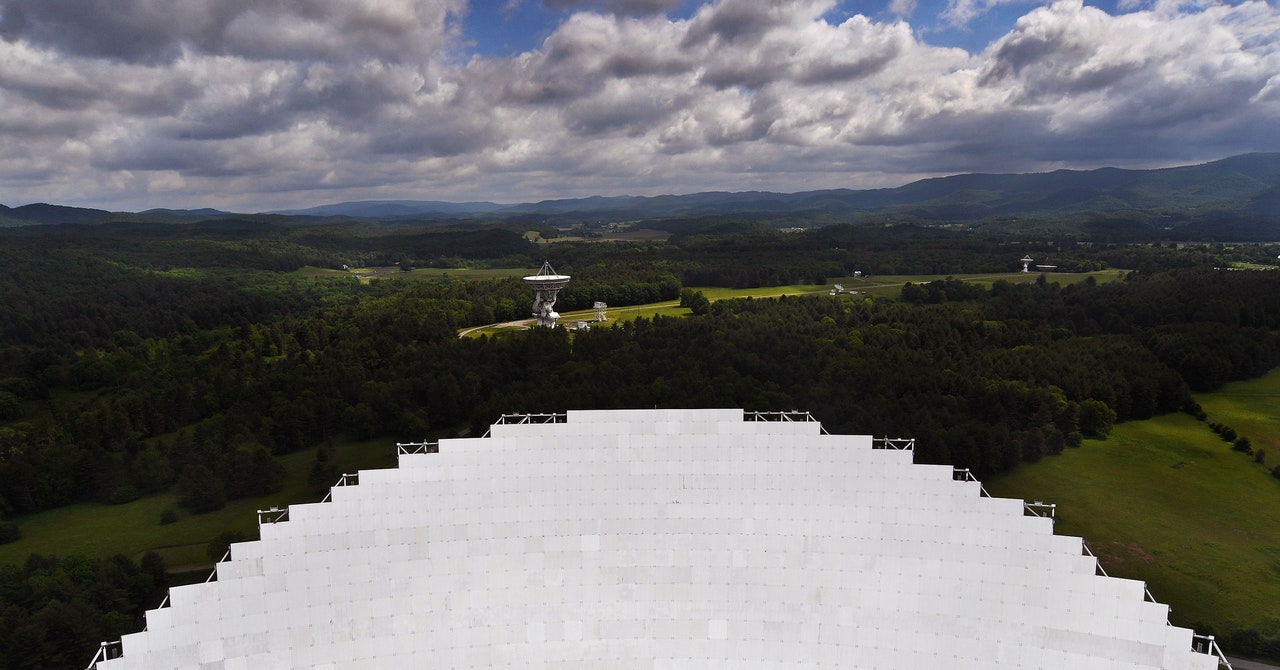
The NANOGrav team was essentially able to turn the Milky Way into a giant gravitational wave detector by measuring the signals from these pulsars to determine when a wave nudged them. The collision of enormous black holes—or some other extremely energetic process—generates gravitational waves that ever-so-slightly squeeze and stretch space-time, tweaking the intervals between pulsar blips. NANOGrav researchers measured those minuscule changes among 68 pulsars, then correlated them, finding a pattern that is likely the sign of low-frequency gravitational waves. The other collaborating teams did the same with separate sets of pulsars.
It took more than a decade of data collection and analysis for the teams to reduce their measurement uncertainties and to be sure that they’d spotted a real sign of gravitational waves rather than some other cosmic phenomenon or mere noise. The NANOGrav team, which includes nearly 200 people, conducted a statistical analysis and found less than one-in-a-thousand odds that the signal they observed could happen by chance. The other collaborations found similar levels of statistical significance.
While these are very likely to be signs of real gravitational waves from colossal black holes, the teams are reluctant to use the word “detection” to describe their findings. Nine years ago, the US-based BICEP2 collaboration, using a telescope at the South Pole, claimed to have detected primordial gravitational waves coming from the big bang, only to find that their signal actually came from pesky dust grains in the Milky Way—and that has made researchers circumspect about their conclusions. “The gravitational wave community is very cautious about these kinds of things,” says Scott Ransom, an astronomer with the National Radio Astronomy Observatory and former chair of NANOGrav.
For their measurements, the NANOGrav team made use of several radio telescopes: the Green Bank Observatory in West Virginia, the Very Large Array in New Mexico, and the huge Arecibo Observatory in Puerto Rico, an iconic instrument that collapsed in 2020. The other teams used radio telescopes in five European countries, India, China, and Australia. More telescopes have recently joined the effort, including CHIME in Canada and MeerTime in South Africa.
The collaboration between scientists in the US and China is notable, says Ransom. While a controversial 2011 law called the Wolf Amendment forbids NASA from working directly with Chinese entities because of security concerns, such restrictions don’t apply to National Science Foundation–funded efforts like NANOGrav. “The politics have made some of our collaborations tricky,” Ransom says. “We have to figure out a way to work together, because the science is definitely better when we do that. It’s terrible being hamstrung by politics.”
The teams coordinate with each other through a sort of super-collaboration called the International Pulsar Timing Array. While the group’s geographic span makes it challenging for the scientists to communicate across time zones, they’re able to combine their data sets, improving their precision and their confidence in their measurements. “One cannot construct a galaxy-sized gravitational wave telescope in your backyard,” wrote Michael Keith, an astrophysicist on the European Pulsar Timing Array executive committee, in an email to WIRED. “It takes a combined effort of hundreds of astronomers, theorists, engineers, and administrators to study the universe at this scale.”

